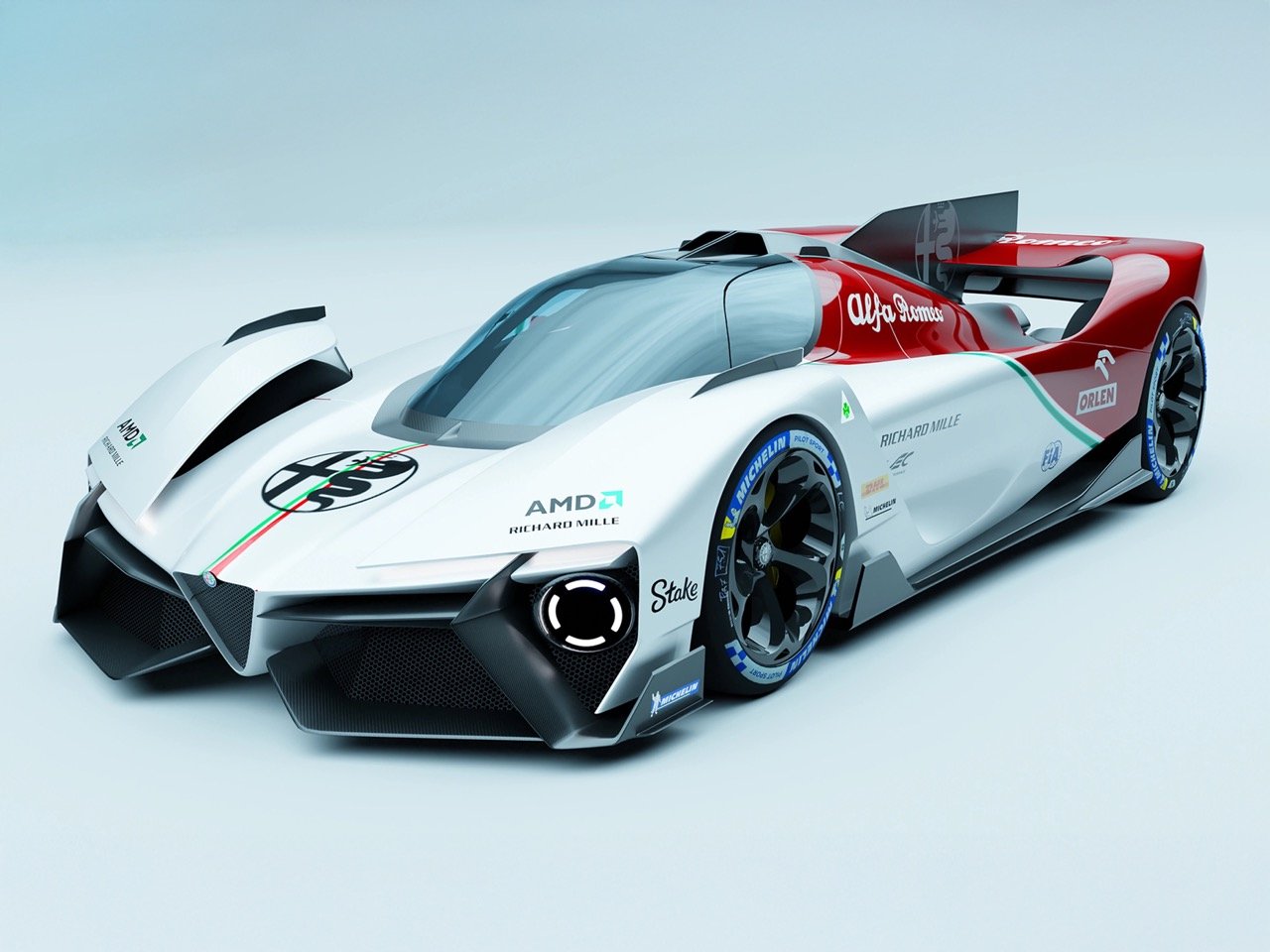Remember when Alfa Romeo actually made cars that could make your pulse race? Before they became the brand that sells crossovers with names like “Stelvio” to suburban families who pronounce it “STEL-vee-oh”? Designer Cheeheon Lee clearly remembers, and his Alfa Romeo Vita Nova concept is a love letter to when the Milanese marque built actual rockets with four wheels. This isn’t some half-hearted styling exercise or student portfolio piece. Lee has crafted something that looks like it rolled straight out of a future where Alfa never lost its way, where every car they made could demolish a Nürburgring lap time and look devastatingly gorgeous doing it.
The Vita Nova concept exists in two flavors: a stunning emerald green road car that screams “hypercar” and a full racing livery version that wouldn’t look out of place leading the pack at Le Mans. Both versions share the same fundamental DNA, but they tell completely different stories about what modern Alfa Romeo could be. The racing variant sports authentic-looking sponsorship from AMD, Richard Mille, and Stake, complete with proper FIA and Michelin logos that suggest Lee has done his homework on what a legitimate LMH or LMDh prototype would actually wear. Meanwhile, the road car version in that deep metallic green makes every current hypercar look pedestrian by comparison.
Designer: Cheeheon Lee
What strikes you first about the Vita Nova is how Lee has managed to evolve Alfa’s signature design language without throwing it in the trash like so many modern interpretations do. The triangular scudetto grille is there, but reimagined as a sharp, predatory arrow that looks ready to slice through air molecules. Those circular headlight elements aren’t just retro callbacks; they’re integrated into aggressive aero channels that suggest serious CFD work went into this design. The proportions are absolutely savage, sitting lower than a snake’s belly with wheel arches that could house small apartments. Lee has clearly studied endurance prototypes because every surface serves an aerodynamic purpose, yet the car never looks overwrought or boy-racer ridiculous.
The emerald green version transforms this racing weapon into something you could theoretically drive to dinner, assuming your dinner destination has a helicopter pad for parking. That color choice is brilliant; it references classic British Racing Green while staying uniquely Italian, and the way light plays across those sculptured surfaces makes every angle photogenic. The racing livery version tells a different story entirely, one where Alfa has returned to prototype racing with factory backing and unlimited budgets. Those sponsor decals aren’t just decoration; they’re a statement that this car belongs on grids alongside Porsche 963s and Toyota GR010s.
From a technical standpoint, the aero package is genuinely impressive for a design study. The front splitter and canards aren’t just for show; they’re sized and positioned like they actually move air. The rear diffuser looks like it could generate enough downforce to pin the car to the track at 200 mph, while that continuous LED light bar serves double duty as both signature lighting and an aerodynamic element. The wheel design deserves special mention: those multi-spoke units with cooling cutouts wrapped in what appears to be Pirelli P Zero Trofeo R rubber suggest Lee understands that pretty wheels mean nothing if they can’t handle the heat from serious braking systems.
Currently, Alfa Romeo builds the 4C, which has been on life support for years, and the Giulia Quadrifoglio, which is genuinely excellent but sells about as well as wooden parachutes. Meanwhile, every other Italian exotic manufacturer is printing money with mid-engine supercars and limited-production hypercars. Lee’s Vita Nova concept shows exactly what Alfa could build if they decided to stop playing it safe and remember their motorsport heritage. This design captures the drama and passion that made people fall in love with Alfa Romeo in the first place, when owning one meant accepting unreliability in exchange for automotive poetry.
The Vita Nova concept proves that talented designers can still imagine futures where legacy brands rediscover their souls instead of chasing market share with crossovers. Lee has created something that honors Alfa’s past while pushing boldly forward, a car that could theoretically exist in our current automotive landscape if someone at Stellantis had the vision and courage to greenlight it. Until then, we’ll have to settle for looking at these gorgeous renderings and wondering what might have been.
The post Alfa Romeo Vita Nova Concept Proves the Brand Still Has Racing DNA first appeared on Yanko Design.

